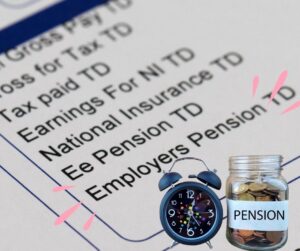 How are my pensionable earnings calculated? – 3-minute explainer
How are my pensionable earnings calculated? – 3-minute explainer
Find out more about what earnings are used to calculate your pension contributions by reading our explainer. The term ‘pensionable earnings’ is also known as ‘pensionable salary.’
When employers set up their pension schemes, they need to decide whether their percentage contribution includes all or just some of the types of pensionable earnings listed below. They then clarify this with their pension provider when they create the scheme. The earnings used in the calculation can include:
- Basic salary
- Overtime
- Bonuses
- Commission
- Statutory payments (for example maternity and paternity or sick pay).
Employers can calculate pensionable earnings on three different bases:
- Qualifying Earnings
- Pensionable Earnings (set 1 and set 2)
- Total Pensionable Earnings (also known as Pensionable Earnings set 3)
Qualifying Earnings (AKA banded earnings basis)
Pension contributions on this basis can include any of the earnings listed above such as bonuses and statutory payments. The contributions are calculated by looking at the band of earnings between the upper and lower level earning limits. These limits are set out by the Pensions Regulator. This method is also known as the banded earnings basis. These are currently for tax year 2023/24:
- Lower monthly earnings limit – £520*/month.
- Upper monthly earnings limit (UEL) – £4,189*/month.
Please note, these limits are different to the National Insurance thresholds, which are set by HMRC. For annual pension contribution thresholds see the Pensions Regulator website.
Example 1 – an employee earns £6,000 per month:

The first £520 of the employees’ earnings are ignored in the calculation. This is because they fall within the pension contributions Lower Earnings Limit (LEL), which is £520 (see above).
All earnings between £520 (i.e., above the Lower Earnings Limit) and £4,189 (i.e., up to the Upper Earnings Limit or UEL) count towards the pension contribution.
All earnings over the UEL £4,189 (i.e., over the Upper Earnings Limit) are ignored.
The employer calculates the pension contribution on £3,699 of earnings.
Example 2 – an employee earns £3,000 (i.e., less than the UEL):
The first £520 of the employees’ earning are ignored in the calculation. This is because they fall within the LEL, which is £520 (same as above).
All earnings between £520 (i.e., above the LEL) and £4,189 (i.e., up to the UEL) count towards the pension contribution.
In this case the UEL is not reached, because the employee earns only £3,000 per month, which is less than £4,189, so all earnings up to £3,000 (less the £520) count towards the pension contribution.
The employer calculates the pension contribution on £2,480 of earnings.
These figures and examples are based on the UEL and LEL rates for 2023/24 tax year.
Pensionable Earnings Basis (set 1 and set 2) – (AKA unbanded earnings basis)
What are the pensionable earnings when the calculation is based on the pensionable earnings basis?

If an employer opts for the ‘pensionable earnings’ basis for calculating contributions then the upper and lower earnings limits do not apply here. This basis for calculation is called ‘unbanded.’ In this scenario pension contributions are based on earnings normally including salary or wages. This depends on what the employer has decided for the scheme. The calculation may or may not exclude variable amounts such as commissions, bonuses, and overtime.
As a minimum, pensionable earnings should include at least basic pay unless the employer has chosen to base calculations on total earnings. In a ‘total earnings’ example, all elements of pay should be included in the pension contribution calculations.
Pensionable earnings basis (set 2) is the same as set one, except that in set two, the basic pay must make up at least 85% of the total earnings. The employer will need to monitor this. It is adviseable employers check each month/year to make sure they’re likely to meet this minimum before using this basis.
Total Earnings Basis (also known as Pensionable Earnings Set three – unbanded)
What are the pensionable earnings when using the Total Earnings basis?
To work out an employee’s pension contributions on a ‘total earnings’ basis, all elements of pay should be included in the calculation.
For more detailed information about the upper and lower earnings limits visit the gov.uk website.
If you are looking for outsourced CFO services or want to discuss how we can support your business with our finance and accounts outsourcing services please get in touch. We look forward to hearing from you.
Use of this explainer is for reference only. Specialist Accounting Solutions Ltd accepts no liability for any errors therein or any losses or damages arising from it. We recommend seeking expert advice from your pension provider or employer for further information.







